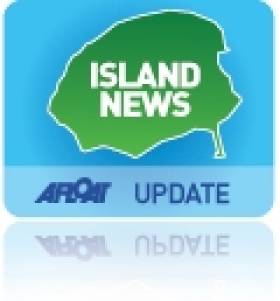Displaying items by tag: MV Island Sky
Busy Day for Aran Islands Capital
#ARAN ISLANDS CRUISE CALL – Two vessels, a cruiseship and a lighthouse tender are today off Kilronan, the capital of Inishmore, the largest of the Aran Islands, writes Jehan Ashmore.
The ships are the 114 passenger cruiseship Island Sky (1992/4,200grt) operated by Noble Caledonia which called this morning having originally departed in Portsmouth and the Commissioners of Irish Lights tender ILV Granuaile (2000/2,365grt) which is based in her homeport of Dun Laoghaire.
Kilronan will be a hive of activity, not just those passengers tendered ashore from the cruiseship but also tourists arriving by frequent ferry services from Rossaveal, Co. Galway and Doolin in Co. Clare. The majority of sightseers will no doubt be heading for the main attraction of Dun Aengus fort on the far side of the island which is reached by shuttle buses and the traditional pony and trap.
The Island Sky's sister the Caledonian Sky which too is operated by the same company made yesterday an anchorage call off Sneem Co. Kerry. It is along the western seaboard that such smallships are attracting a niche market. In addition it is in these same waters is where ILV Granuaile is more often to be found working during the summer months as the weather is more favourable to carry out aids to navigation duties.
Unlike the cruiseship, the lighthouse tender does not actually anchor. Instead she can maintain a constant position using dynamic positioning (DP) which uses satellite technology to adjust the vessels manouvering systems to precise pin-point accuracy.





























































